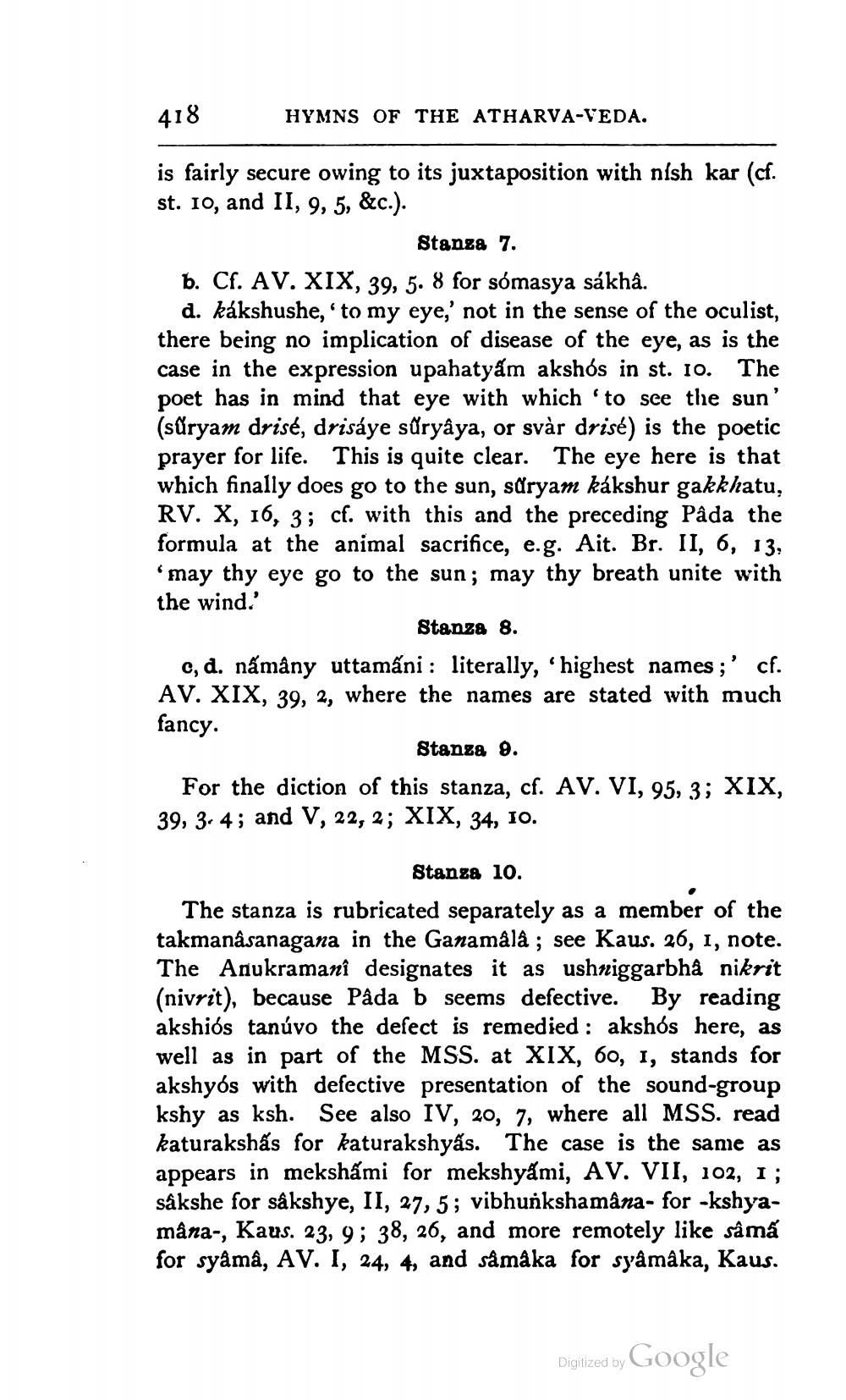________________
418
HYMNS OF THE ATHARVA-VEDA.
is fairly secure owing to its juxtaposition with nísh kar (cf. st. 10, and II, 9, 5, &c.).
Stanza 7. b. Cf. AV. XIX, 39, 5. 8 for sómasya sakhâ.
d. kákshushe,' to my eye,' not in the sense of the oculist, there being no implication of disease of the eye, as is the case in the expression upahatyám akshós in st. 10. The poet has in mind that eye with which 'to see the sun' (súryam drisé, drisaye sûryâya, or svår drisé) is the poetic prayer for life. This is quite clear. The eye here is that which finally does go to the sun, süryam kákshur gakkhatu, RV. X, 16, 3; cf. with this and the preceding Pâda the formula at the animal sacrifice, e.g. Ait. Br. II, 6, 13, 'may thy eye go to the sun; may thy breath unite with the wind.'
Stanza 8. c, d. námány uttamấni : literally, 'highest names;' cf. AV. XIX, 39, 2, where the names are stated with much
fancy.
Stanza 9. For the diction of this stanza, cf. AV. VI, 95, 3; XIX, 39, 3.4; and V, 22, 2; XIX, 34, 10.
Stanza 10. The stanza is rubricated separately as a member of the takmanâsanagana in the Ganamala ; see Kaus. 26, 1, note. The Anukramani designates it as ushniggarbhà nikrit (nivrit), because Påda b seems defective. By reading akshiós tanúvo the defect is remedied: akshós here, as well as in part of the MSS. at XIX, 60, 1, stands for akshyós with defective presentation of the sound-group kshy as ksh. See also IV, 20, 7, where all MSS. read katurakshas for katurakshyas. The case is the same as appears in mekshấmi for mekshyami, AV. VII, 102, 1; såkshe for sâkshye, II, 27,5; vibhunkshamâna- for -kshyamâna-, Kaus. 23, 9; 38, 26, and more remotely like sâmã for syâmâ, AV. I, 24, 4, and såmåka for syâmâka, Kaus.
Digized by Google
Digitized by




